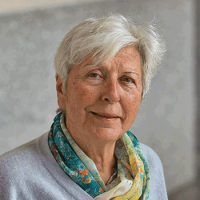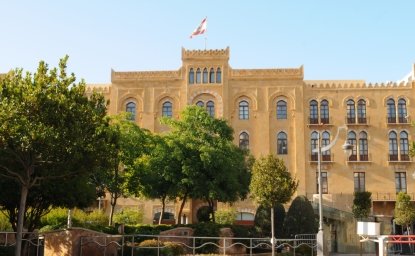Since 2011, Middle East countries have undergone successive waves of protest. Such protests have had an impact on the region’s political, social and cultural landscape, but almost nowhere have they succeeded in stimulating progress toward democracy and socio-economic justice. Many protesters, above all the youth, are angry and disillusioned. While such reaction is understandable, the lack of success is not surprising: most protests do not bring about deep, enduring change and when they do, it usually takes a long time. In India, for example, Mahatma Gandhi agitated for almost three decades, through successive periods of activism, before India became independent. Similarly, South Africa experienced repeated waves of protest for more than half a century before the apartheid system finally came to an end. In both cases, protest and resistance went through many changes in the nature of the demands and the methods of struggle before obtaining results. And in almost all cases, protest movements surged, then went dormant before resurging again.
The experience of the Arab world with movements seeking to bring about domestic political change is very recent. Therefore, it does not offer a long-term perspective. It is thus useful to look at the experience of other countries to gain some understanding of how protest movements evolve over time. I will focus on the United States, which has a long and well-documented history of protest movements. Despite the presence of democratic institutions that give citizens a routine voice in public affairs, time and time again, Americans have turned to extra institutional means to bring about critical change. This has been particularly true of efforts to advance the rights of women and those of African Americans and other minorities. For brevity, I will refer to the two movements as the women’s and civil rights movements, although the terms are contested by some who argue that they are too narrow. Even a superficial look at these movements helps put the Arab protest movements into perspective, avoid hurried judgements about their effectiveness, and stimulate ideas about how they will likely evolve in trying to attain their goals. It is not that the United States is or should be a model for Arab countries—every country will follow its own path. But the long history of protest in the United States offers some useful insights.
Protest can shake a system loose, but it takes organized power to reconstruct one.
Three important points relevant to analyzing Arab protests emerge from the history of the women and civil right movements in the United States. First, as I pointed out earlier, it took a long time before those movements had any success, and that success was only partial, generating successive waves of protest. Second, the movements were in constant evolution in terms of their demands, organization, leadership, and structure. Third, they were never successful without establishing strong ties to the incumbent authorities, even as their opposition did not relent, because in the end change is always enacted from the top. The conclusion that change ultimately comes from the top is difficult to accept by protesters and their supporters, who believe in grassroots efforts. Grassroot movements act as a catalyst, but change comes from the top even in countries that undergo revolutionary change: it was Lenin and other leaders of the Communist Party, not the people who took to the streets and stormed buildings that transformed the old Russian Empire into the Soviet Union. Protest can shake a system loose, but it takes organized power to reconstruct one.
The struggle for women’s rights
The women’s rights movement in the United States started with a narrow focus on suffrage. Its official beginning is considered to be the Seneca Falls Convention held in upstate New York in 1848. The end of the first phase of the movement came in 1920, with the ratification by a sufficient number of states of the 19th Amendment to the US Constitution, which granted women the right to vote. In the seventy years before the passage of the amendment, the women’s rights movement became increasingly narrow. In 1848, at least some of the leaders embraced the abolitionist as well as the suffragist cause, but that did not last. Indeed, the suffrage movement itself became segregated—women of color were allowed to participate but forced to march at the back of all demonstrations. The narrow focus both helped and hindered the movement. It made it possible for it to claim a complete victory—it only demanded women’s suffrage and in 1920, it got it. But victory came late, long after black males received the right to vote in 1870. Most importantly and detrimentally to women’s interests, the complete victory brought the movement to an abrupt halt even though women still occupied an inferior position in American society. An Equal Rights Amendment was first approved by congress in 1923 but women never rallied behind it. As a result, to this day the measure has still not been approved by a sufficient number of states and languishes in limbo.
However, the broader the movement becomes in its focus and goals, the less likely it is that it will achieve landmark victories such as the one the suffragettes gained in 1920.
After 1920, the women’s movement was dormant for decades and was only revived on a large scale in 1963. In its new incarnation, the feminist movement had broader but also less focused goals, looking less at legal issues than at the social issues affecting women. Some were extraordinarily narrow—in 1970s, for example, feminism gave rise to an extensive literature on the politics of dishwashing in the household. Others were much broader, dealing with equality in the workplace and in political life. Successive waves of feminism broadened the focus even more—think of today’s “Me too” wave that deals with sexual harassment and assault. The outcome of this less focused feminism was mixed. It cannot point to a major victory, although it has scored many smaller ones. The presence of women in professional and public life is now incommensurably greater than it was in the 1960s. Today, women in the U.S. make up around 55 percent of the workforce and a record number of congresswomen (141) were elected to the House of Representatives a few weeks ago. Glass ceilings are also being shattered one at a time. The movement continues evolving, with new foci and new tactics emerging to tackle the existing gender inequalities. However, the broader the movement becomes in its focus and goals, the less likely it is that it will achieve landmark victories such as the one the suffragettes gained in 1920.
Civil Rights
The struggle for the full integration of African Americans and other people of color in American life has an even longer history. It started with all acts of resistance and insubordination by slaves brought into the country, took an organized form with the abolitionist movement and the emergence of the underground railroad to help fugitive slaves reach free states, and scored its first major victory with the emancipation proclamation signed by President Abraham Lincoln in 1863: a clear example of change ultimately coming from the top. But the proclamation was only the first step in a protracted process to recognize the equality of all US citizens, which continues to this day.
The Emancipation Proclamation was followed in 1865 by the enactment of the 13thamendment, which formally abolished slavery. In 1869, the 15th amendment gave African American men (not women of course) the right to vote. The formal rights recognized by the constitution were negated in the following decades by increasingly restrictive laws and regulation that made it virtually impossible for African Americans to vote in southern states and also imposed strict segregation in education, housing, transportation, and public places. Rights were also curtailed in the rest of the country not by laws but by blatant use of discriminatory practices and economic coercion that forced African Americans into de facto segregated neighborhoods and schools.
The next phase of the movement, beginning in the 1950s, was the launch of what is usually called the civil rights movement, a complex of initiatives spearheaded by many different organizations and leaders that challenged segregation—in transportation, lunch counters, and other public places—and above all fought to make it possible for African Americans to exercise the right to vote. The new wave of the struggle for equal rights was largely a grassroot effort, but it also found encouragement in the Supreme Court’s 1954 decision that declared “separate but equal schools” unconstitutional and by President Dwight Eisenhower’s 1957 decision to deploy federal troops in Arkansas to make it possible for black students to enter white schools. This is another example of how both protests and top-down decisions are needed to bring about change.
As demands and grievances expand is scope, it becomes more difficult for a new incarnation of the civil rights movement to obtain landmark successes, although change continues to take place.
After years of struggle marked by much brutality and violence by the opponents of racial equality, Congress enacted the Civil Rights Act of 1964 and the Voting Rights Act of 1965. The problem of racial inequality was of course not solved, and protests never really ceased, but continued in a less dramatic and more decentralized fashion. The enormous issues that still affect the lives of people of color in the United States are not only numerous but very different from each other—reform of the criminal justice system, curbing police brutality, reforming the poor state of urban public schools, addressing ongoing voter suppression among minorities, economic inequality, access to housing, to mention just a few. As demands and grievances expand is scope, it becomes more difficult for a new incarnation of the civil rights movement to obtain landmark successes, although change continues to take place.
Since 2013, a new movement for racial justice and equality has emerged: The Black Lives Matter movement. It emerged in 2013 in response to the killing of a black teenager walking home from a convenience store by a white vigilante, and the subsequent acquittal of the killer. The movement spread nationwide, fed by anger over a seemingly unending series of police killings of unarmed black people. BLM reflects the changing nature of protest for equal rights. It is a movement without a formal organization, a loose network of local organizations largely independent of each other. Unlike the civil rights movement, which spawned many national leaders that left a real political impact through grassroots organization, agitating, and then negotiating with the government, Black Lives Matter has no well-known leaders with a national presence. And yet, the movement is a real force—although it is too early to judge its effectiveness.
This brief overview barely scratches the surface of the struggle for equal rights for women and for African Americans in the United States. Both struggles have evolved greatly over time, but there is also continuity. There were periods of great activism and periods of dormancy. The focus has shifted, and so have the tactics, depending on conditions on the ground, the decisions of leaders, and the reaction of the authorities. Whether or not the movements always made the best choices, protesters showed the capacity to adapt to circumstances and shift and the movements’ acquired complexity and depth.
Protests in the Arab World
How do these ideas and experiences then apply to the materializing protest movements in the Arab World?
One similarity beginning to emerge is that the Arab movements show signs of evolving. Rami Khouri, for example, has argued in a recent discussion that in Lebanon the protesters’ demands have deepened along with the development of a real sense of citizenship and responsibility among the participants. However, such a conclusion is difficult to prove. What is more evident is that that some of the second generation of protest movements, those that emerged in 2018-2019 (particularly those in Algeria and Sudan), have shown increased sophistication in their tactics and greater realism about the complexity of the task; they prepared for a protracted effort without expecting immediate results. In contrast, the first generation of protesters in 2011 expected instant victory and were quick to accept changes that soon proved detrimental to their goals. “The citizens and the army are one,” Egyptians in Tahrir Square declared when the military forced President Hosni Mubarak from power, but they are now living under the most repressive military government since Gamal Abdel Nasser’s days. While there are some positive signs that the movements may be evolving, a lot of things have not changed. Most protest movements remained unstructured and without prominent leaders—more like Black Lives Matter and the women’s movement today, rather than the Civil Rights movement in the past. Fluidity of organization and absence of prominent leaders may satisfy an ideological commitment to equality and participation, but it may also decrease effectiveness. Leadership and organization were crucial to the major successes of movements in the US.
So far, we have not seen any real shifts in the calculus of the political class in Arab countries. We have also not seen a real attempt by the protesters to force or encourage that shift by engaging with centers of power.
Arab protesters, with the exception of those in Sudan, are still showing little sign of engaging with the authorities and accepting the fact that and major changes can only come from the top, if those on the top get on board. The problem here does not lie entirely with the protesters. The absence of a democratic tradition in the Arab world means that authorities are inclined to turn to repression rather than dialogue. But authorities in the United States did not respond promptly or eagerly to the demands of women and ethnic minorities, either. The suppression of the civil rights movement was brutal. The repression came mostly from the states, but the federal government also vacillated, divided between principles and politics. Eisenhower, not a person with deep personal commitment to equal rights, sent federal troops to integrate schools in the south because he believed in the rule of law, thus in enforcing a Supreme Court decision. President John F. Kennedy and his brother Robert Kennedy carefully balanced their theoretical support of rights for minorities with calculations of the political costs and were thus less forceful. President Lyndon Johnson, who put his signature on both the Civil Rights and the Voting Rights Act, did not start his political career as a champion of civil rights or equality. His roots where in the South and he was often irked by the demands of Martin Luther King and other movement leaders. It took three assassinations and a country badly shaken by a persistent protests and recurrence of summer riots in major urban centers to change his calculus. So far, we have not seen any real shifts in the calculus of the political class in Arab countries. We have also not seen a real attempt by the protesters to force or encourage that shift by engaging with centers of power.
The future of protest movements in Arab world looks rather bleak at present. In many countries, they have already gone dormant. However, given the depth of discontent and magnitude of the problems at the economic, political, and social levels protests are bound to flare up again. Whether new protest movements opt for better organization, accept the necessity of leadership, or find a way to engage with the authorities, is not clear at present. It is impossible to predict how protesters will define their goals and organize themselves in the coming years. But the experience of other countries, not just of the United States, suggest that we are likely to see many changes on these issues before real political changes take place. Even then, success will be partial, and the movements will be revived again and again.
The views expressed in these articles are those of the authors and do not reflect an official position of the Wilson Center.
Author

Former Senior Research Associate and Head of the Middle East Program, Carnegie Endowment for International Peace

Middle East Program
The Wilson Center’s Middle East Program serves as a crucial resource for the policymaking community and beyond, providing analyses and research that helps inform US foreign policymaking, stimulates public debate, and expands knowledge about issues in the wider Middle East and North Africa (MENA) region. Read more





